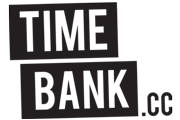The use of time as a basis for a currency isn’t novel
The first timebanks date back to the Industrial Revolution. The American anarchist Josiah Warren opened in 1827 a Time Store in Cincinnati. Goods were offered in exchange for the amount of time that it took to produce them. In 1832 the Welsh social reformer Robert Owen issued Labor Notes. Comparable to bank notes, they represented the value of units of 1, 2, 5, 10, 20, 40, and 80 hours of labor.
Especially during times of big economical crises the practice of using emergency money became popular. This money is not issued by a central bank, but by an institution not authorized for money emission, usually savings banks, municipalities or local private organizations. This unofficial emergency money is not legal, but mutually accepted because it is often the only means of payment available. Often these currencies had a stabilizing effect on the local economy. In Germany after the hyperinflation around the end of the first World War, many of these emergency currencies (called Notgeld) emerged.

Notgeld – Ströbeck, 75 Pfennig, 1921, emergency money with chess motives
More recent well-known time based currencies are the Time Dollar used for social projects in the US, the Japanese Fureai Kippu for elderly care in exchange for time credits, and the Ithaca Hour, a very successful local currency in Ithaca, New York.
Time banks have been established in around 34 countries. Throughout the United States and the United Kingdom many time banks have appeared. Time banks also have a significant presence in Japan, South Korea, New Zealand, Taiwan, Senegal, Argentina, Israel, Greece, Portugal and Spain.
The time/bank by e-flux
The artists Anton Vidokle and Julieta Aranda were inspired by these banks when they initiated the time/bank by e-flux. Their aim was to create an immaterial currency for the international cultural community. The Dutch branch of their timebank was opened in May 2011 by the art and architecture center Stroom Den Haag. It was part of the Stroom’s program Upcycling which investigated new perspectives in the creation of value and meaning. The distrust of existing financial and economic systems and the radical cuts in art funding were an important driving force behind this parallel micro economy based on trust and solidarity.
In June 2013, the Dutch branch of the time/bank by e-flux became an independent association. The branch had then outgrown the stage of an experimental and artistic project. A more solid web infrastructure, economic model and legal structure was needed. By becoming an association, Timebank.cc seeks to apply its democratic values to the administrative structure. Essential to the design of this community is a bottom-up approach.
Today
Timebank.cc contributes to the growing trend of thinking about local communities and the search for new autonomy within the current economic model. We distinguish ourselves from other community currencies by disconnecting the relationship between the euro and our currency. Our currency exists in addition to the euro and the fundamentally different valuation – an hour of work is worth an Hour – creates more diversity within the economy. This results in a stronger resilience against any financial events that may happen in the current system.
The platform serves as a support for individuals and businesses. Lectures and meetings stimulate critical and decisive thinking about current economic systems. Various important national and international media and organizations have shown interest in the Timebank community story. In the web address Timebank.cc the cc stands for Complementary Currency.

